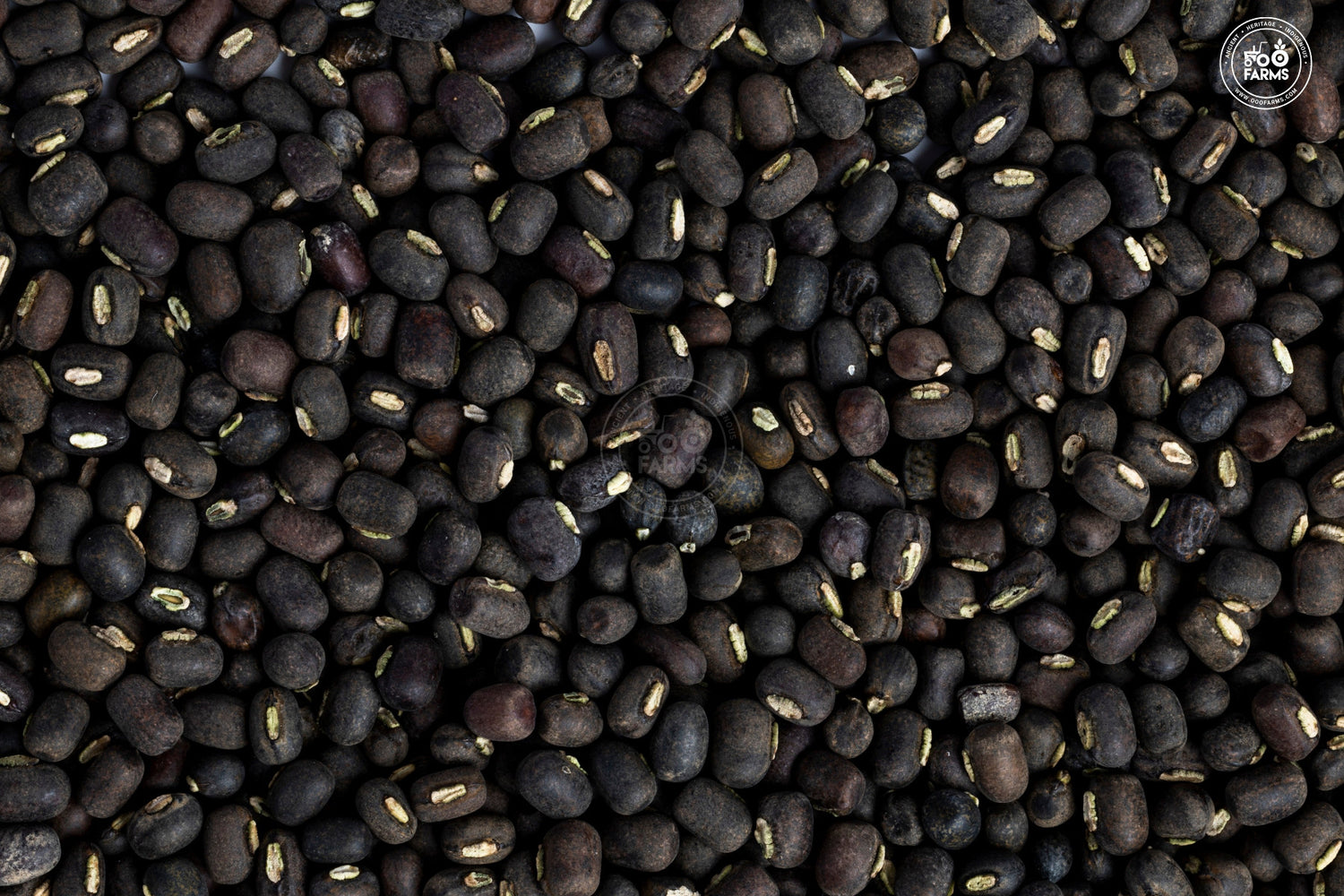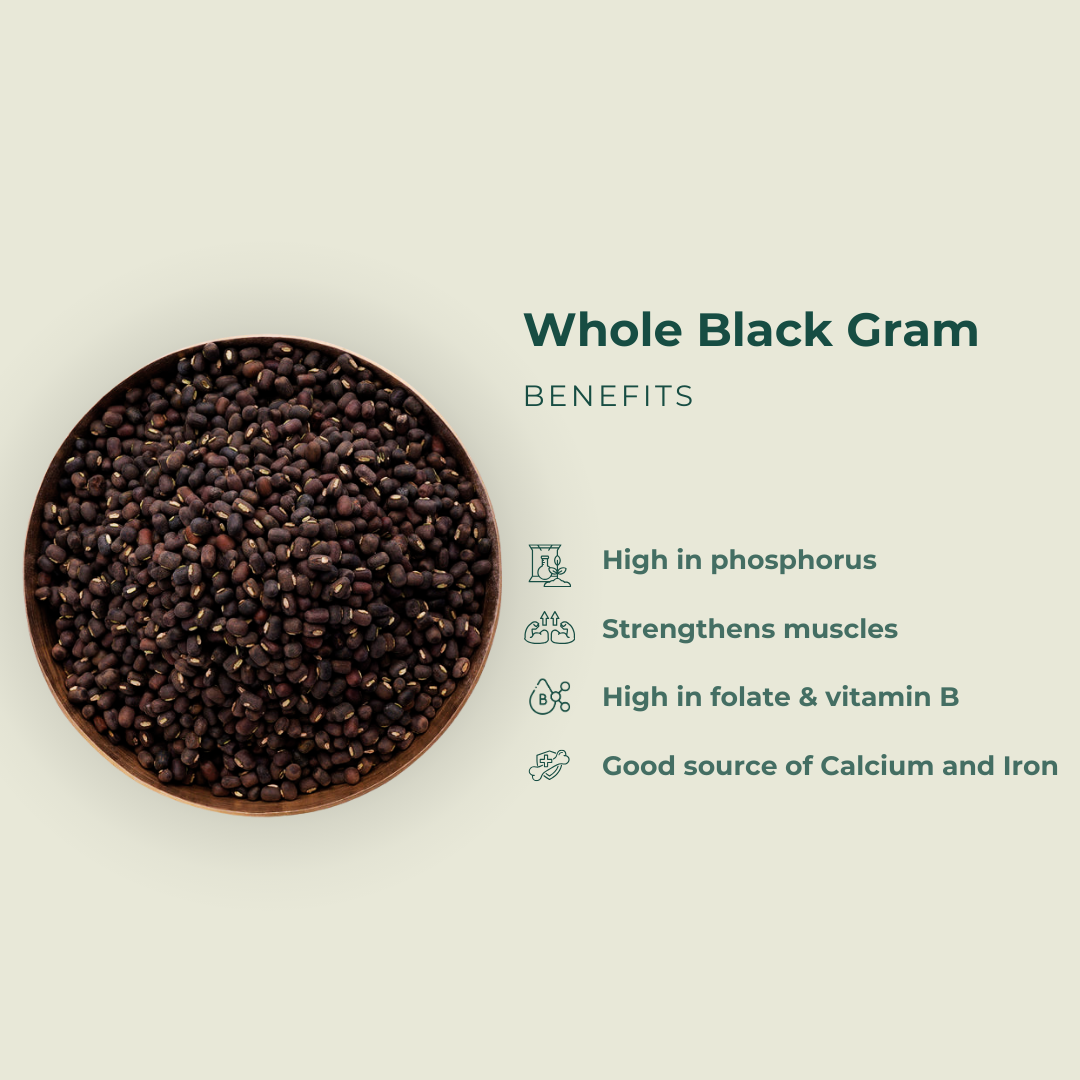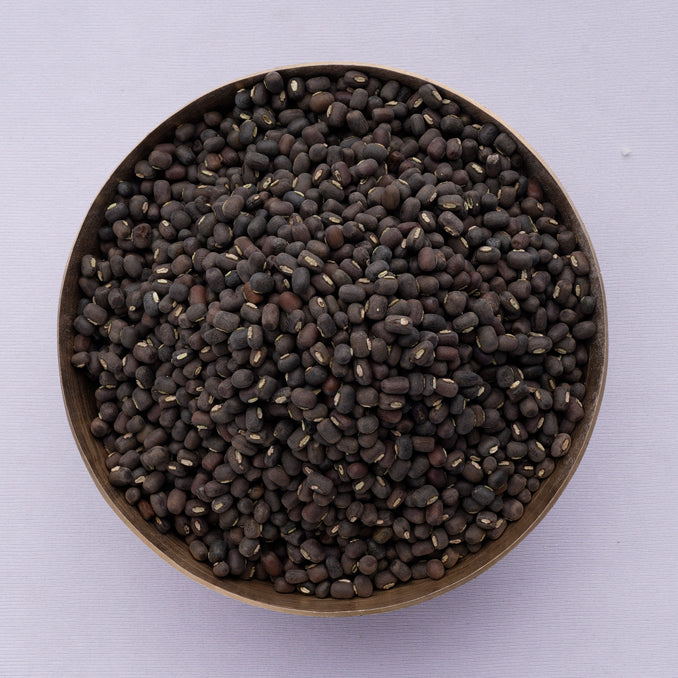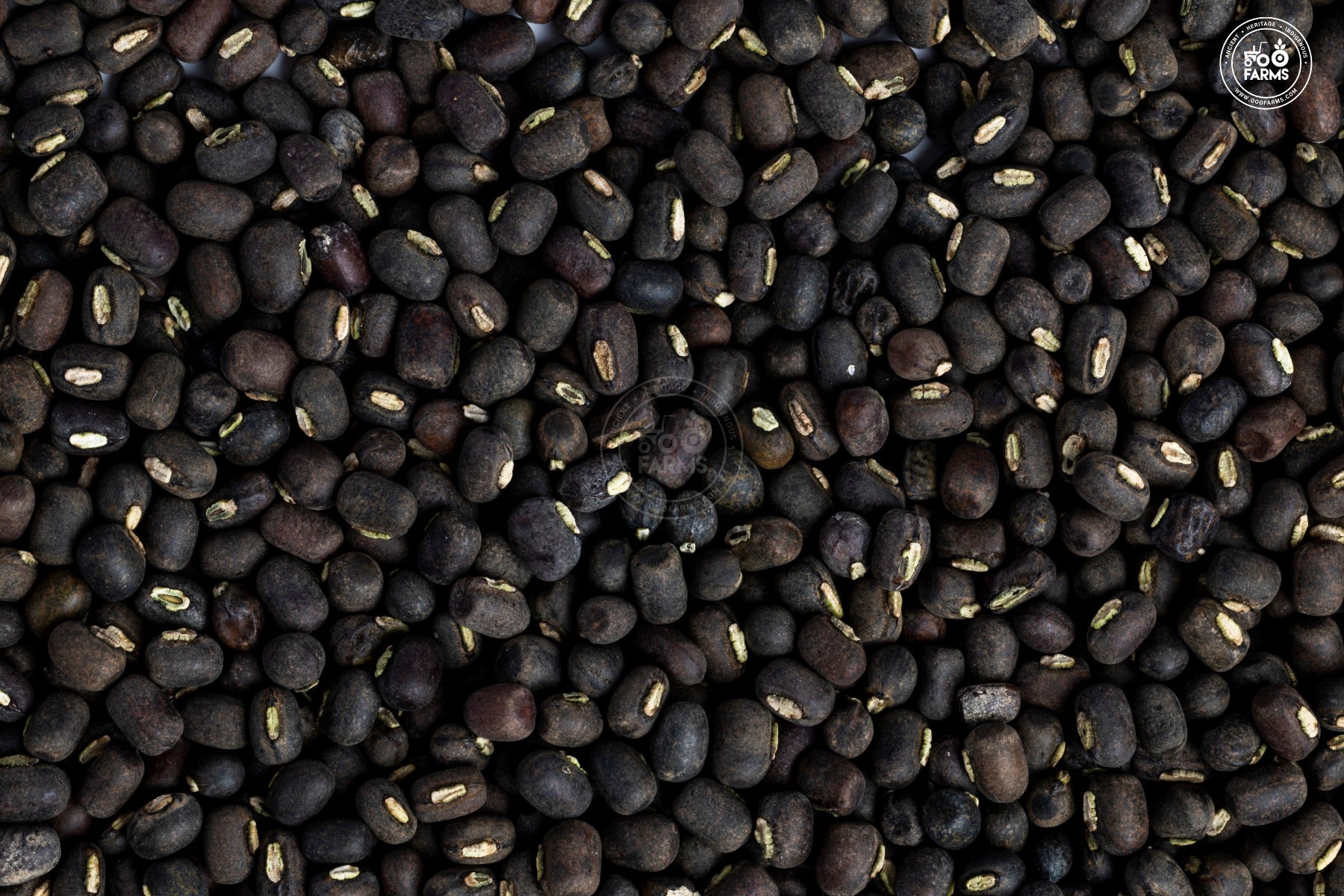
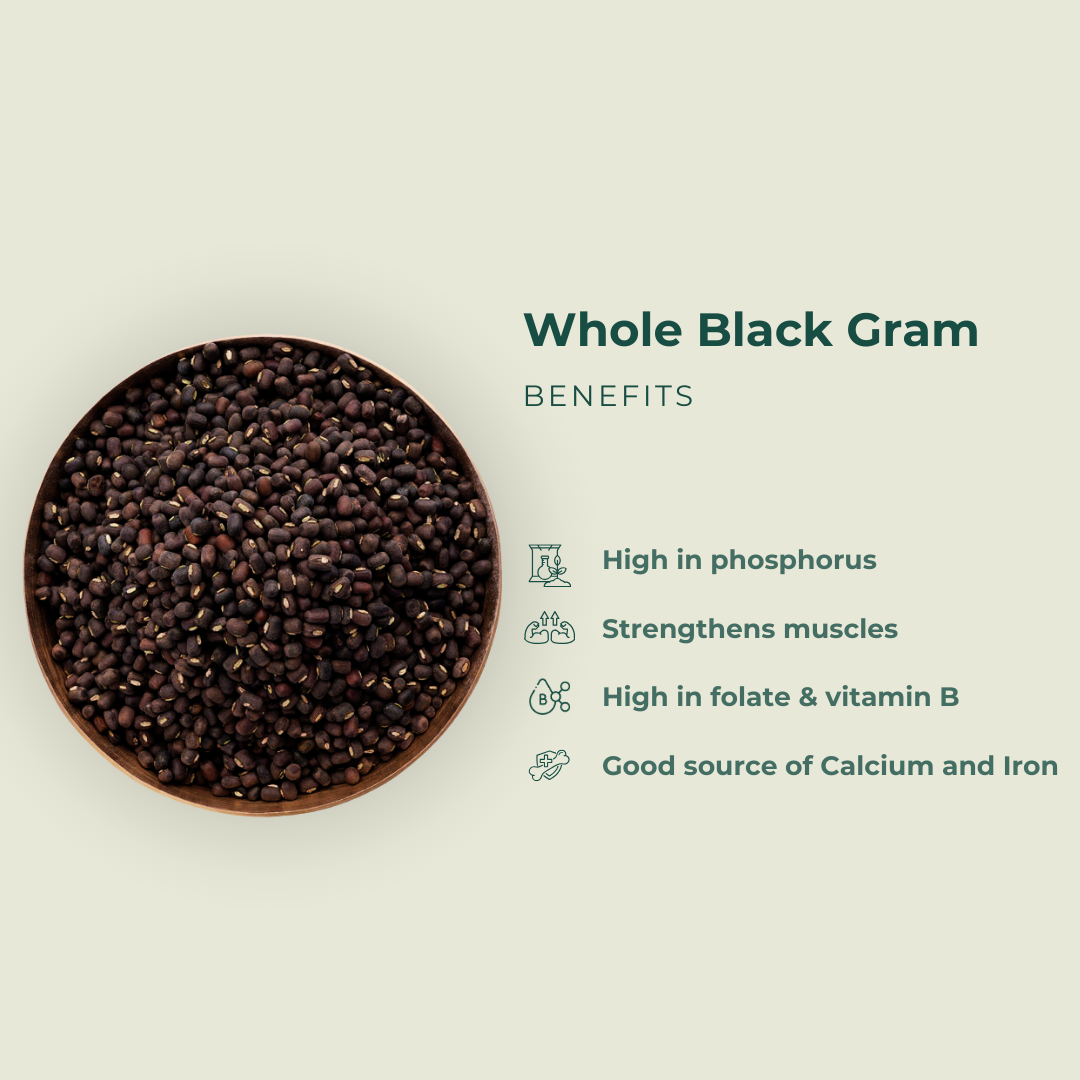
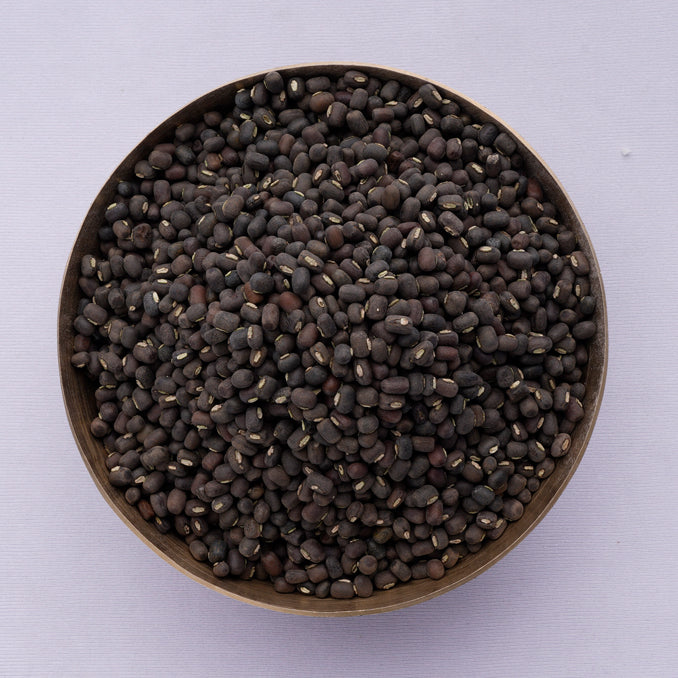
Additional Product Details
Description
Originating in South Asia, this lentil was introduced in the tropical regions of the Caribbean, Fiji, Mauritius, Myanmar and Africa mainly by Indian immigrants.
Black Gram is high in Folate and the richest Source of Protein (24%-26%). The unique type of Protein in Black Gram strengthens muscle fibers. High level of Starch (35%) in Urad makes it ideal to make Dosa/Idlis.
Urad is also Rich Source of Vit. B, Potassium, Calcium, Iron, Niacin, Riboflavin and Thiamine. In fact, Black Gram has 10 times more Phosphorus than any other pulse
Black Gram have also been mentioned in ancient Vedic texts. Ayurvedic texts describe Black Gram as a pulse that can regularize imbalances caused due to Vata. Ayurvedic practitioners also recommend Urad Dal for women of reproductive age to balance hormones and strengthen reproductive organs. Also, they recommend Black Gram for men suffering from low sperm count, motility and erectile dysfunction.
Health Benefits
Cooking Instructions
Recommended Usage
Commonly Known As
History


